|
Aurora Gallery back to spaceweather.com |
| Summary: September marks the beginning of aurora season in the northern hemisphere. In early September 2004, auroras were sparked by solar wind streams from coronal holes on the sun. Then, on Sept. 13th, a coronal mass ejection (movie) struck Earth's magnetic field and started a days-long episode of intermittent high-latitude auroras. The month ended with a few episodes of high-latitude auroras caused by little solar wind gusts. [See also the August 2004 aurora gallery.] Page 1 | This is Page 2 Got
pictures? Submit
them. |
| Photographer, Location | Images | Comments | |
|
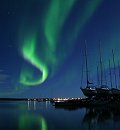
|
Peter Jeffery,
Yellowknife, Nt, Canada Sep. 29 |
#1, #2, #3, #4, |
The moon was almost full, but we still had a couple great displays that lasted about 15-20 minutes each. Canon 10D 17mm lens, 6 sec @f2.8, iso 400 |
|
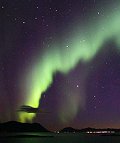
|
Frank S. Andreassen,
Harstad, Norway Sep. 23 |
#1, #2, #3, #4, more |
The aurora forecast was good so I went out to take some images while the sky was clear. The activity started at 21:00 GMT (22:00 local time) and lasted for about two hours. Photo details: Canon 1D MarkII, 17-40mm f/4.0, iso set at 640 and 800, 30 seconds exp. |
|
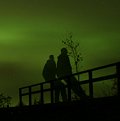
|
Andrew Eaton,
Yellowknife, Canada Sep. 22 |
#1, #2, #3, #4, more |
There was a great sub storm that happened as we were here at the mine shaft taking photos. It was great and lit up the sky all around us! |
|
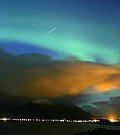
|
Frank S. Andreassen,
Harstad, Norway Sep. 14 |
#1, #2, #3, #4, more |
Photo details: Canon 1D MKII, 17-40mm, 160-320 iso, 20-30 seconds exp. |
|
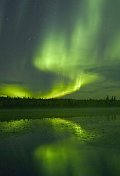
|
Andrew Eaton,
Yellowknife,NT Sep. 14 |
#1, more |
Canon 300D for 40 secs@F3.5. Some nice aurora before clouds came out and killed the night. |
|

|
Travis Favretto,
Sault Ste. Marie, ON, Canada Sep. 17 |
#1, #2, #3, #4, more |
Auroras were visible all night long as a glow to the north, but the activity peaked around 7:00 UTC, when some nice wavelike movement was visible. I was also fortunate enough to spot four meteors and a satellite on this night, but unfortunately, none of them were in view of the camera. Taken with a Canon PowerShot A60, 15 seconds at f2.8, ISO400. |
|
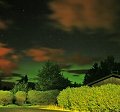
|
Hans Sivenius,
Jämsä, Finland Sep. 15 |
#1, #2, more |
These auroras were relatively weak; they seemed like green fog. Nevertheless, these were the first auroras I've seen this autumn. Canon 300D 18mm/F3.5, 30s, ISO 1600 |
|
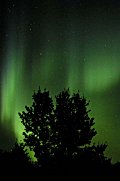
|
Chris Gray ,
Moosehorn Dist, MB, Canada Sep. 14 |
#1, #2 |
This display was short lived. It became highly visible around 11:00 pm local time. Although the display lasted over 2 hours most of the time it was rather dim with not much visible movement. These shots were taken during to short periods of visible activity. Nikon D100 with 50mm lens ISO 500 |
|
|
Philippe Moussette,
Cap-Rouge Québec Canada Sep. 14 |
#1, #2, more |
Taken with Canon Digital Rebel 1600ASA exposed 5 seconds. |
|

|
Stephane Levesque,
Luceville.Quebec Canada Sep. 14 |
#1, #2, #3, more |
16 and 28 mm/10 to 20 s/800 asa |
|
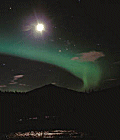
|
Colin
Tyler Bogucki, Teklanika campground, Denali National Park, Alaska. Sep. 06 |
#1, #2, #3, more | This was the best part of the display, between 1:00 and 2:00am. I was using a Nikon 35mm, 200 ASA, and 40 second exposures. The lights are reflecting off the Teklanika River |

